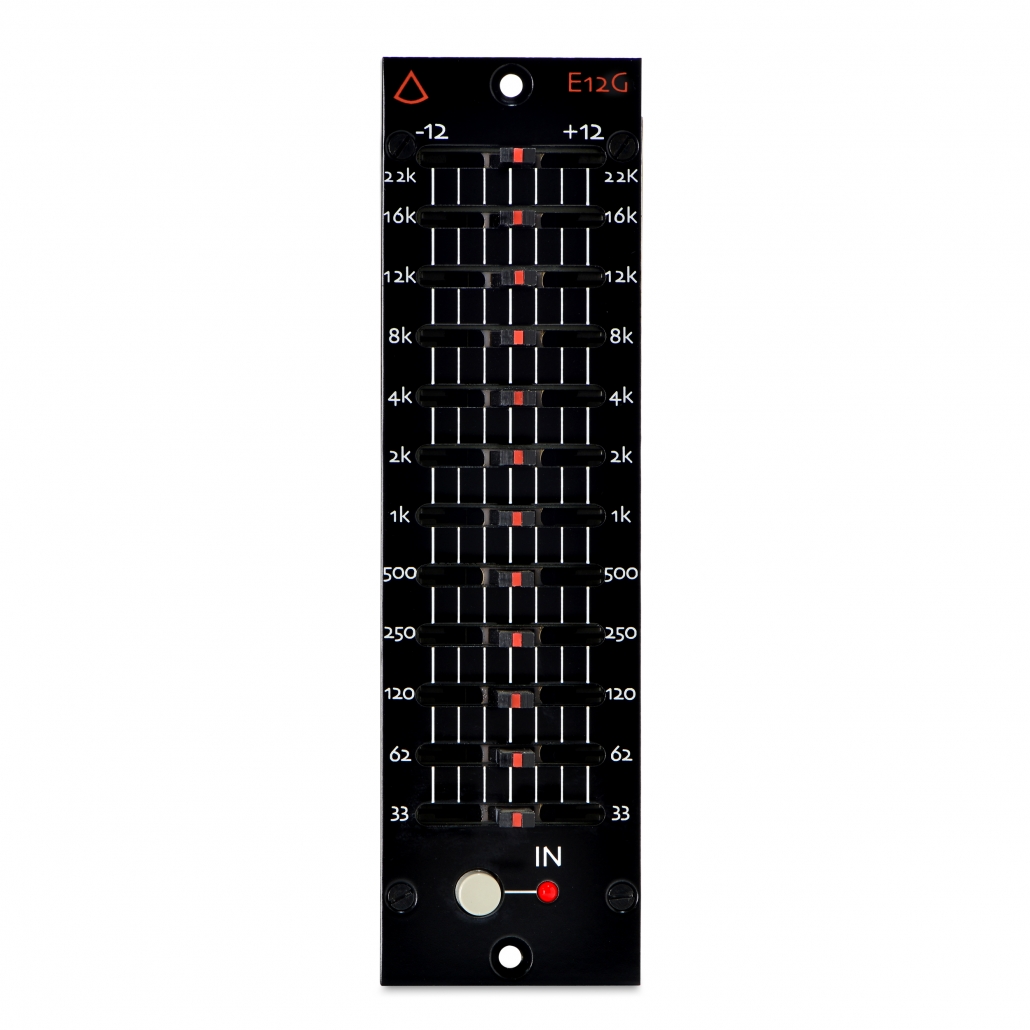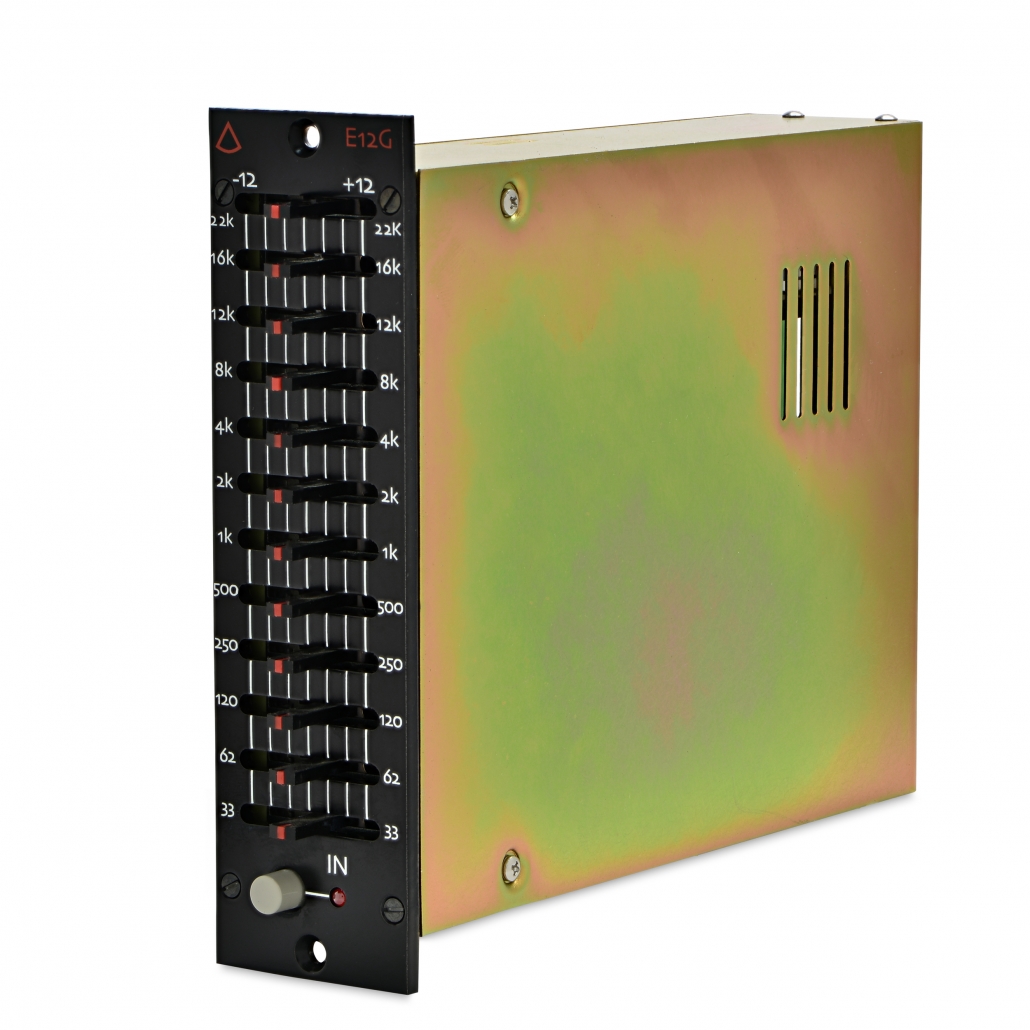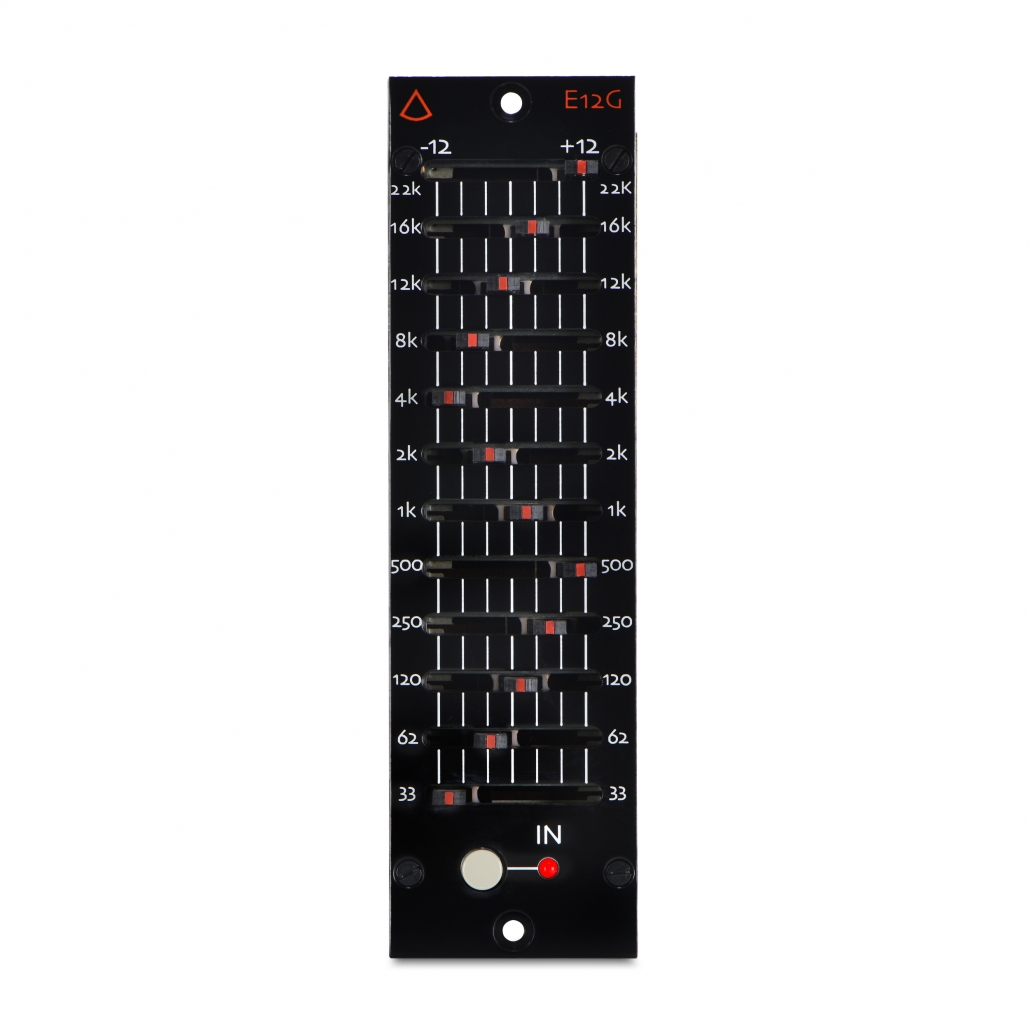E12G
Features
- 12-band graphic equalizer
- +12/-12dB’s of boost/cut
- Additional frequencies 12kHz and 22kHz fills a void
- Class A design for each band, NO IC’s in the audio filters
- Ingenius® input stage for transformer-like performance
- In-house made high performance output transformer
- Proportional Q narrows bandwidth at higher settings
- Center detent sliders
- Bypass goes through input and output stage amplifiers
- Excellent for tracking
- Standard 500 series modular size 1.5″ x 5.25″
12-BAND GRAPHIC EQUALISER
The E12G was designed for the need for a high quality graphic equalizer in a 500 series module format. Its ease of use for sound shaping and frequency correction during tracking makes the E12G an indispensable tool in the studio. There are no IC chips in the frequency bands, as customary of other graphic eq designs. Instead of IC’s, the use of Class A preamps for each band was designed to keep your music from sounding “processed”, and help to bring out every detail of harmonic richness captured by the microphone and a high-end mic preamp. Additional frequencies 12kHz and 22kHz was chosen to fill a void in the high frequencies, not found in other graphic equalizers. The Ingenius® input stage, designed by Bill Whitlock of Jensen Transformers®, provides clarity and performance found in high end input transformers.
FAQ
What is the E12G mainly used for?
As a graphic equalizer, the E12G can be used as anywhere you’d like to use a correctional equalizer, but without the need for anything too precise. It can be placed after a mic-pre on the way to your DAW when tracking.
How much current does it draw?
40 mA per rail, so 80 mA total. You could fill a rack or a console full of them without needing more power.
How is the E12G different in the frequencies than other graphic eq’s in the 500 series?
The E12G has 12 bands, instead of the customary 10 band you find in other graphic eq’s. We felt the two additional frequencies, 12kHz and 22kHz, are important to have and very useful in the high frequencies.
Is it a "proportional Q" design?
Yes, the E12G’s design naturally starts with a wider Q, and tightens up as you have more boost or cut. “Q” is frequency divided by its -3dB bandwidth point.
Tell me more about the Ingenius input stage.
The Ingenius® input stage was developed by Mr Bill Whitlock, former president of Jensen Transformers. It was designed to perform similarly to an input transformer, having excellent common-mode rejection in a balanced interface. It is the only integrated circuit used in the E12G with far less junction components in the path of the audio to retain a more natural and clear sound.





